by Carol A Westbrook

The sun has always been an object of fascination and interest, appearing as it does as a bright, shining sphere crossing the daytime sky. On Monday, April 8, many of us will have had the opportunity to see the sun in all its glory as the moon crosses between it and the earth, briefly revealing its spectacular halo, the solar corona. Although we tend to take the sun for granted, an event like this makes us stop and think of how little we know about this celestial object.
Primitive peoples recognized that the sun was the source of all the earth’s heat and light; it was as important as the air we breathe and the water we drink. The sun was necessary to raise food crops and forage. Who could grow a garden in the shade? The sun marked the days and the seasons with a predictable regularity providing security and structure to their lives. The longest days, the shortest days, and the two equinoxes, had a special significance to their lives as they delineated the seasons, and they celebrated these days with feasting and sacrifice and prayers to their gods; and they raised large and impressively accurate monuments to mark these days. Stonehenge inf England is the best known of these monuments, but there are many others such as the pyramid at Chichen Itza in Mexico which casts a shadow in the shape of a serpent climbing the pyramid at the vernal and autumnal equinoxes. It is perhaps this disruption in this regularity and dependability that tend to make solar eclipses such memorable—and perhaps frightening–events.
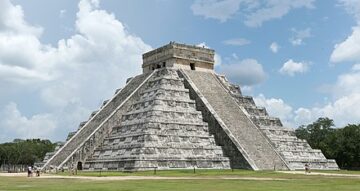
Eclipses have been memorable and recordable events since the earliest time. Spiral petroglyphs on the Megalithic Monument of Loughcrew Cairns, Ireland, indicate the eclipse of Nov 30, 3340, possibly the earliest recorded such event. Another one of the earliest recorded solar eclipses occurred in Ugarit (Northern Syria), which happened on May 3, 1375 B.C Historians of Ugarit, recounted that the sun was “put to shame” during this total eclipse. And eclipse occurring on April 16, 1178 BC, may have been the one in ancient Greece mentioned in Homer’s Odyssey. A total eclipse just south of Mecca, mentioned in the Quran, occurring on Nov 24, 569, preceded the birth of the prophet Muhammad. And during the crucifixion of Jesus, as noted by Christian gospels, the sky was dark for hours, which may have been due to either the eclipse of 29 CE or of 33CE, marking the dates of Jesus’ death.
One of the most significant events in science occurred during the May 29, 1919 solar eclipse, observed on the Island of Principe by Eddington and in Brazil by Dyson. They confirmed Albert Einstein’s theory

of general relatively by demonstrating the bending of light by the gravity of the Sun; in their observation, stars with an apparent position behind the Sun became visible during the eclipse.
It is not surprising that the sun was an object of worship central to many religions and and mythologies, where the sun is pictured as a burning hot disk that was a god, or was carried across the sky by a god. The falcon-headed god Ra, of the early Egyptians, sailed across the sky in a barque carrying the sun. To the Greeks he was Helios, drawn in a chariot pulled by fiery horses. In the late Roman empire, he was Sol Invictus, “Invincible sun.” Sol’s birthday was a holiday which came soon after the winter solstice, which was possibly the antecedent to Christmas. In Norse mythology the sun is the goddess Sol, who brings life and fertility. The ancient Chinese believed that a dragon swallowed the sun, and use drums and noisemakers to chase it away!  The sun is no longer worshipped as a god in most modern religions with the exception of Hinduism in which Surya is the Hindu god of the Sun. (see above) Surya is one of the five major deities of Hinduism. He is considered the creator of the universe and the source of all life; the supreme being who brings light and life, energy and knowledge to the world.
The sun is no longer worshipped as a god in most modern religions with the exception of Hinduism in which Surya is the Hindu god of the Sun. (see above) Surya is one of the five major deities of Hinduism. He is considered the creator of the universe and the source of all life; the supreme being who brings light and life, energy and knowledge to the world.
Throughout early civilizations, the obvious conclusion was that the sun, along with the moon and planets, moved across the sky, with the earth at the center of the universe. An alternative viewpoint, that the Sun is the center of the universe around which traveled the planets, including the earth, was first proposed by the ancient Greek Arstarchus of Samos in the third century BC. This is known as the heliocentric (sun-centered) theory. Heliocentricity turned out to be a satisfying theory that could explain the movements of the heavenly bodies; it was developed into a detailed mathematic model proposed by Nicolaus Copernicus” in his book,“On the revolutions of the heavenly spheres” first published in 1543 in Nuremberg.
However, the situation changed with the astronomical discoveries Galileo made in 1609-1612 by means of the newly invented telescope. He reported mountains on the Moon, satellites around Jupiter, the phases of Venus and sunspots. Once Galileo published his findings (which supported the Copernican theory), Copernicus’ book was suspended in 1616 following a decree against Copernicus’ theories. These discoveries did not conclusively
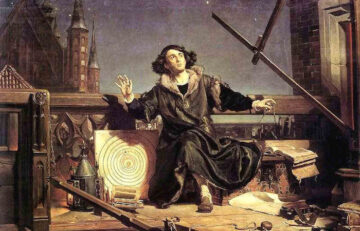
prove heliocentrism, but provided new evidence in its favor and refutations of some old objections. Following Galileo’s trial by the Roman Inquisition, Copernicus’s book was banned and remained on the list of prohibited books, until 1835 almost 400 years later. The book challenged the religious thought that man, whom God created, was the center of all things. The cosmology of early 16th-century Europe held that Earth sat stationary and motionless at the center of several rotating, concentric spheres that bore the celestial bodies: the sun, the moon, the known planets, and the stars. The theory of heliocentricity was gradually accepted by scholars and scientists as more evidence emerged to support it, but the Catholic Church held firm to its beliefs. The ban on Copernicus’ book was not lifted until 1835.
With the scientific revolution and the Enlightenment came the acceptance that all natural phenomena could eventually be accounted for by the laws of nature, without need for magic, gods or angels. One of the first unknowns to be answered about the sun was, “what fuel does the sun burn?” In ancient times the sun was thought to be a burning ball of fire in the sky, but the lack of oxygen in the sun’s vicinity meant this was an impossibility. Studies on the composition of the sun using the new tool of spectroscopy revealed that it was primarily composed of 74% hydrogen—an element consisting of one proton—and 23% of another element that had not previously been described: helium, consisting of two protons. (Later helium was found to exist on the earth). It was Arthur Eddington, an English astronomer, physicist, and mathematician who, in 1921, proposed that hydrogen-helium fusion could be the primary source of stellar energy, as two of the single protons of hydrogen combine to form helium, consisting of 4 protons. This reaction produces a tremendous amount of energy, but it can only occur at extreme temperatures, such as those found within the sun. Attempts to produce this reaction artificially in the lab have so far been unsuccessful, but optimism remains that fusion has the potential to be a major source of energy to replace fossil fuels.
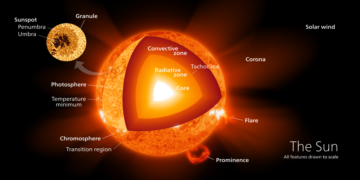
Our sun has a surprisingly complex structure. It is an almost perfect sphere which rotates unevenly, taking 24.47 days at the equator and almost 38 days at the poles. Its core takes up about 25% of its size, and that is where fusion occurs, producing the heat and light so valuable to our earth. The sun has strong magnetic fields resulting from the constant motion of the sun’s electrically charged gases. Sunspots form at areas where magnetic fields are particularly strong, inhibiting heat convection to the surface; the spots are dark because they are cooler than surrounding areas.
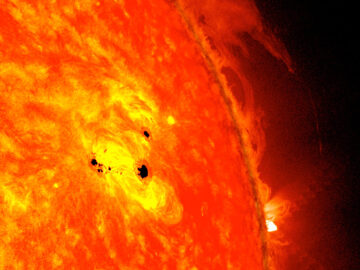
Above the core are the radiation and convection zones, and then the photosphere, which is the visible surface of the sun. The sun’s atmosphere, the corona, extends many thousands of kilometers above the photosphere, gradually becoming the solar wind that flows outward through our solar system. Sunspots are visible as dark patches on the Sun’s photosphere and correspond to concentrations of magnetic field which prevent heat from the core’s hydrogen fusion from reaching the surface. Because sunspots are cooler than their surroundings, they appear dark.
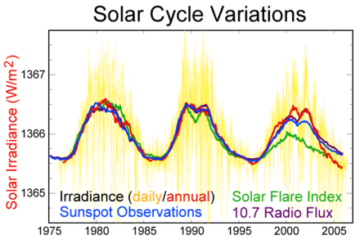
The number of sunspots on the sun varies cyclically, reaching a maximum every 22 years. We are in such a peak now. During the peak of solar activity, coronal mass ejections (CMEs) occur. CMEs are large expulsions of plasma and magnetic field. These solar storms wreak havoc on electrical activity and radio transmissions, and they are responsible for the beautiful displays of northern lights. With luck you may glimpse a CME entering the sun’s corona during eclipse totality. Amateur radio operators like myself notice that the radio airwaves become full of static, or even act aberrantly, during the period of peak solar activity, especially during solar storms. A coronal mass ejection, actual photo, below.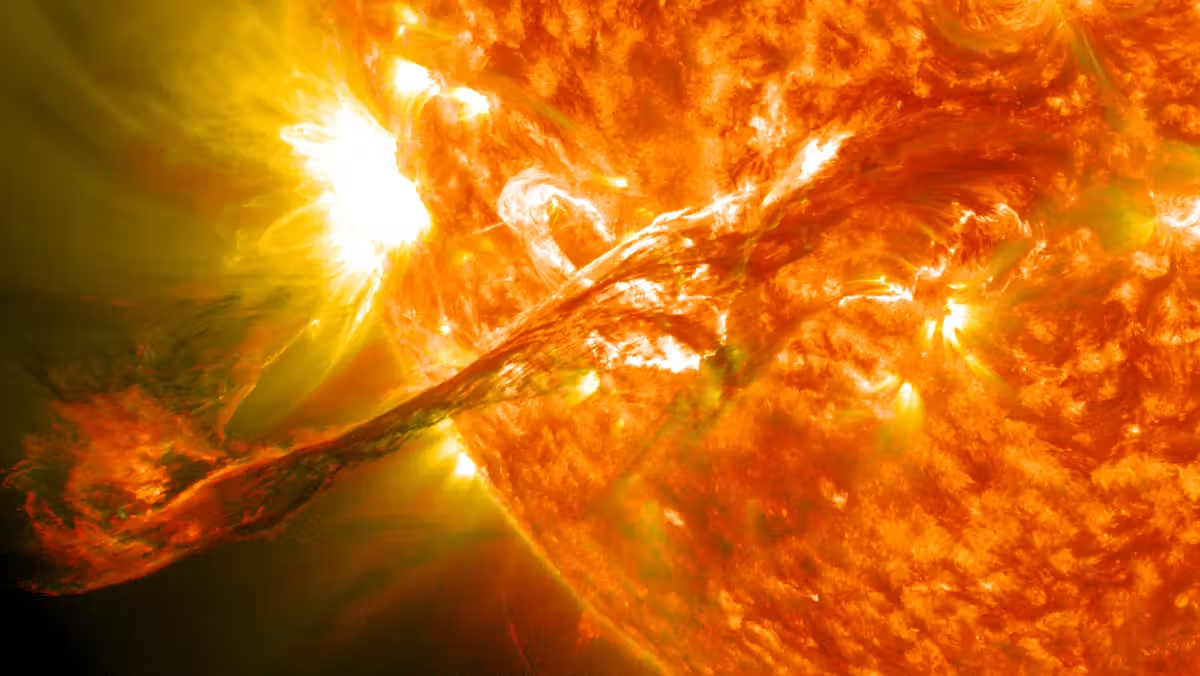
But the sun does not have an inexhaustible supply of hydrogen to convert into helium. We have a fairly good idea of what will happen to our sun when the hydrogen supply runs out based on what we know about other stars, which are called “main sequence stars,” i.e. those that convert hydrogen into helium by fusion. One of two things will happen when the fuel runs out; for our sun, the core will diminish in size, becoming denser and hotter, causing its outer layers to expand, resulting in a red giant star.
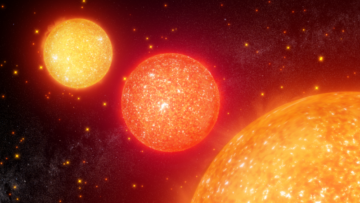
The red star will then collapse into a white dwarf, eventually ejecting its mass and becoming a planetary nebula. On the other hand, stars that are at least 8 times denser than Sol will run out of fuel and collapse on their own gravity, then blow apart in a supernova.
When the sun heats up as it becomes a red giant, our planet will become uninhabitable. Fortunately, that won’t happen for another billion years. Until then we can enjoy the sun’s gifts of warmth, the beauty of its life-giving light, and the occasional privilege of viewing a total eclipse.
